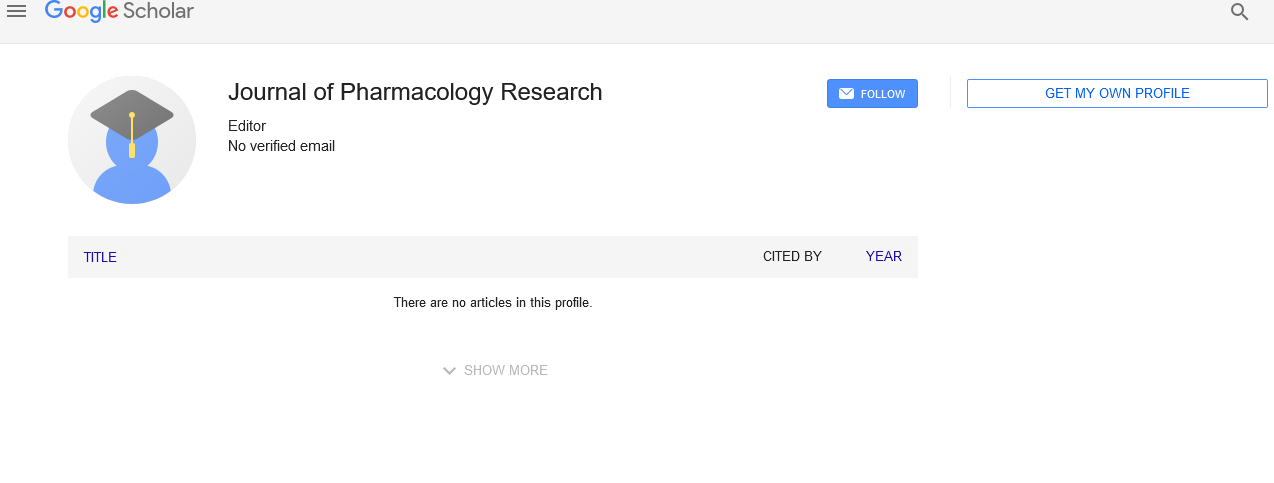A short note on pharmacovigilance
Received: 01-Oct-2021 Accepted Date: Oct 14, 2021; Published: 21-Oct-2021
Citation: Hey H A short note on pharmacovigilance . J Phram Res 2021;4(5):1.
This open-access article is distributed under the terms of the Creative Commons Attribution Non-Commercial License (CC BY-NC) (http://creativecommons.org/licenses/by-nc/4.0/), which permits reuse, distribution and reproduction of the article, provided that the original work is properly cited and the reuse is restricted to noncommercial purposes. For commercial reuse, contact reprints@pulsus.com
Description
Pharmacovigilance (PV, or PhV), conjointly referred to as drug safety, is the medicine science concerning the gathering, detection, assessment, monitoring, and interference of adverse effects with pharmaceutical product. As such, pharmacovigilance heavily focuses on adverse drug reactions (ADR), that area unit outlined as any response to a drug that is unwholesome and accidental, as well as lack of effectively. Medication errors like drug, and misuse and abuse of a drug likewise as drug exposure throughout maternity and breastfeeding, are of interest, even while not Associate in Nursing adverse event, as a result of they'll lead to Associate in Nursing adverse drug reaction. info received from patients and aid suppliers via pharmacovigilance agreements, likewise as different sources like the medical literature, plays an essential role in providing the information necessary for pharmacovigilance to require place. so as to promote or to check a pharmaceutical product in most countries, adverse event information received by the license holder (usually a pharmaceutical company) should be submitted to the native drug administrative body. Ultimately, pharmacovigilance worries with distinguishing the hazards related to pharmaceutical product and with minimizing the chance of any damage which will come back to patients. corporations should conduct a comprehensive drug safety and pharmacovigilance audit to assess their compliance with worldwide laws, rules.
The activity that's most typically related to pharmacovigilance (PV), and that consumes a major range of resources for drug restrictive authorities (or similar government agencies) and drug safety departments in pharmaceutical corporations, is that of adverse event reportage. Adverse event (AE) reportage involves the receipt, triage, data entry, assessment, distribution, reportage (if appropriate), and archiving of AE information and documentation. The supply of AE reports might include: spontaneous reports from aid professionals or patients (or different intermediaries); invited reports from patient support programs; reports from clinical or post- marketing studies; reports from literature sources; (including social media and websites); and reports rumored to drug restrictive authorities themselves. For pharmaceutical corporations, AE reportage may be a restrictive demand in most countries. AE reportage conjointly provides information to those corporations and drug restrictive authorities that play a key role in assessing the risk-benefit profile of a given drug.
The subsequent area unit many sides of AE reporting:
Individual case safety report: one amongst the elemental principles of adverse event reportage is that the determination of what constitutes a personal case safety report. Throughout the sorting section of a possible adverse event report, it's vital to work out if the "four elements" of a legitimate individual case safety report area unit present:
(1) A recognizable patient
(2) A recognizable newsperson
(3) A suspect drug
(4) An adverse event
If one or a lot of those four components is missing, the case isn't a legitimate individual case safety report. Though there are not any exceptions to the present rule there could also be circumstances which will need a judgment decision. for instance, the term "identifiable" might not invariably be clear-cut. If a MD reports that he/she incorporates a patient X taking drug Y United Nations agency intimate Z (an AE), however refuses to produce any specifics regarding patient X, the report remains a legitimate case even if the patient isn't specifically known. This can be as a result of the new person has first-hand info regarding the patient and is recognizable (i.e. a true person) to the MD. Identifiability is vital therefore as not solely to stop duplicate reportage of identical case, however, conjointly to allow follow-up for extra info.
Reports from the media (including social media and websites); and reports rumored to drug restrictive authorities themselves. For pharmaceutical corporations, AE reportage may be a restrictive demand in most countries. AE reportage conjointly provides information to those corporations and drug restrictive authorities that play a key role in assessing the risk-benefit profile of a given drug.





